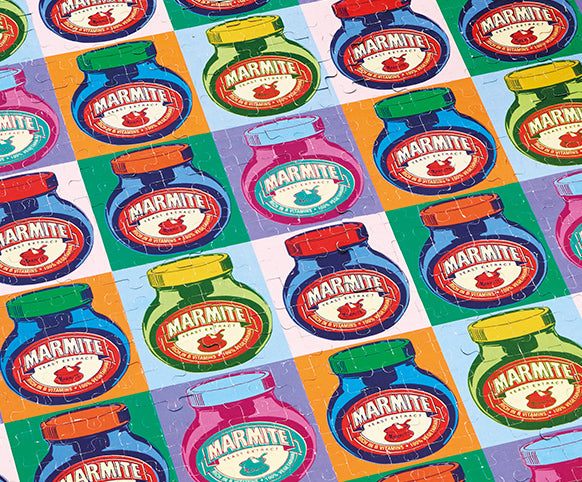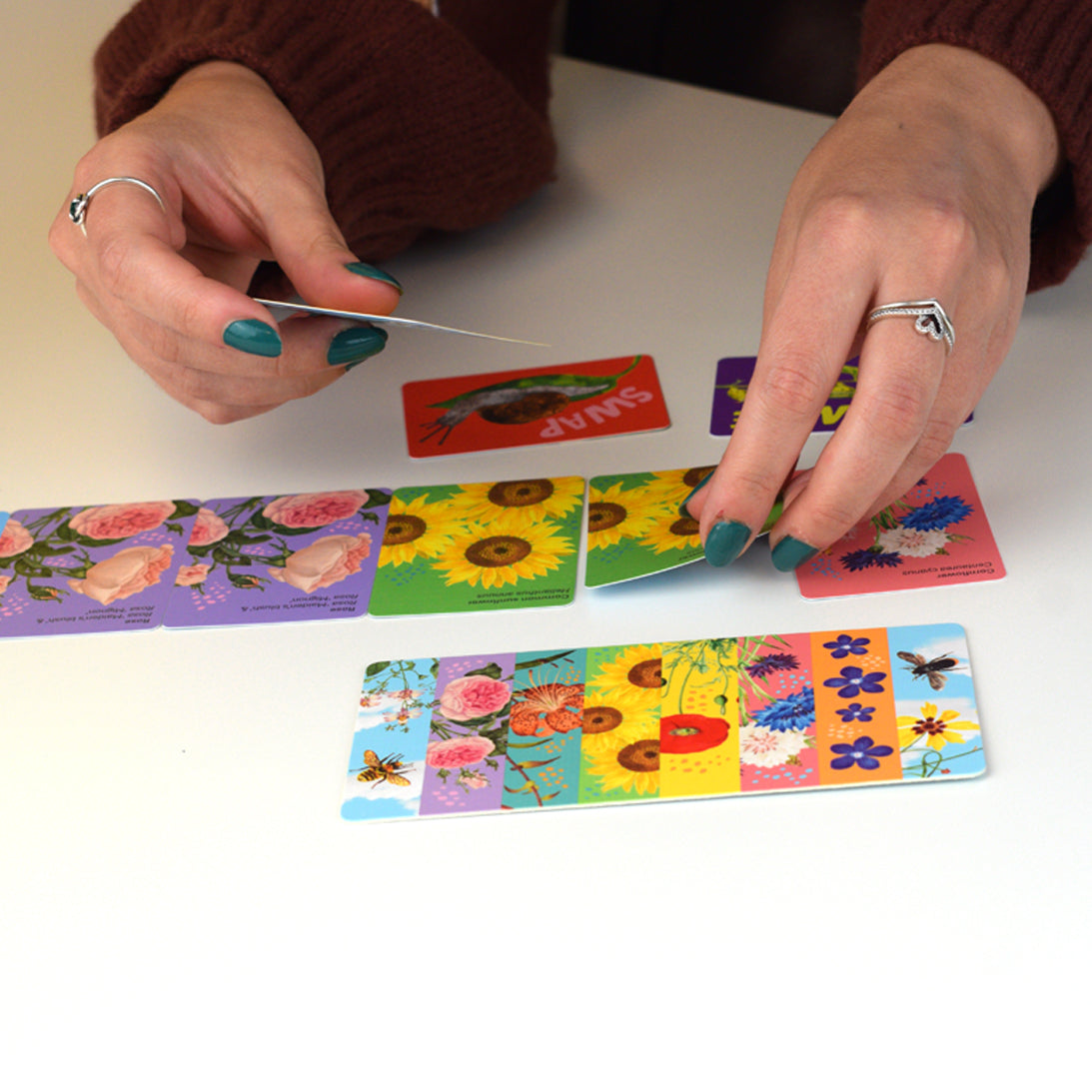
We at Gibsons are huge lovers of Marmite and when The Museum of Brands sent us this article we just had to share it! Our Marmite jigsaw puzzle is one of our best-sellers and was even shortlisted for a Gift of the Year Award. If you're a serious Marmite fan, keep an eye on our website for more Marmite-related announcements next year! 
Launched in the UK in 1902, Marmite is a savoury food spread created as a by-product of brewer’s yeast, a substance involved in the production of alcohol. It was discovered as an edible entity in its own right by German scientist Justus Von Liebig. It was in 1902 that the Marmite Food Company (later Marmite Ltd) was set up in Burton on Trent. The basic production method of breaking down brewer’s yeast to release soluble amino acids and proteins has changed little since Marmite was first invented. This soluble material is then concentrated and filtered a few times before going through a unique (and top secret) process for flavour development.
In 1912, biochemists Hopkins and Funk proposed the theory that certain diseases might be caused by a dietary deficiency of certain vitamins. Marmite was found to be a plentiful source of B vitamins, and henceforth became a popular staple in schools and hospitals. Subsequently, Marmite served a purpose during the two World Wars; included in soldiers ration packs during WWI and used as a dietary supplement in the prisoner-of-war camps of WWII.
Marmite originally came in a small earthenware pot, similar to the kind of French casserole dish called a ‘Marmite’, (pronounced MAR-MEET). This is where Marmite gets its name from. The original ‘Marmite‘ dish can still be seen on the front of the modern pot. The glass jars more often associated with the product came into use in the 1920s. The shape of the jar and the distinctive red and yellow label have remained very similar since then, although in this same year marmite cubes were also introduced.
Marmite’s publicity campaigns initially emphasised the healthy nature of the spread, extolling it as “The growing up spread you never grow out of.” During the 1980s, the spread was advertised with the slogan “My mate, Marmite”, chanted in television commercials by an army platoon.
The idea that Marmite is a product that one either loves or hates was the subject of a large scale marketing campaign throughout the first decade of the 21st Century which included dual websites: I Love Marmite and I Hate Marmite, where people shared their experiences of Marmite and were actively encouraged to fuel this debate.
Marmite celebrated its 100th birthday in 2002, at a time when public demand was high and the company was valued at £30million. Throughout these 100 years there were few changes to the Marmite packaging. A thinner version in squeezable plastic jars was introduced in March 2006 and the only other small changes occurred on limited edition packs.
In 2004, a UK TV advert which parodied the 1958 Steve McQueen film The Blob – substituting Marmite for the original alien space menace and including scenes of fleeing crowds – was dropped from children’s television after concerned parents reported that their children had been scared by the adverts and had nightmares after viewing them.
In February 2007 Marmite produced a limited edition Guinness Marmite of 300,000 250g jars of their yeast extract with 30% Guinness yeast. The Guinness Marmite had a more subtle and smoother taste. Although alcohol free, it still retained a noticeable Guinness flavour. In January 2008 a new special edition, Champagne Marmite, was released for Valentine’s Day in February. The limited-edition run of 600,000 units was initially released exclusively to Selfridges of London, then across the UK, from 21st January. With 0.3% champagne added to the recipe, the spread was effectively non-alcoholic, but had a sweeter smell than the regular spread, a slightly lighter hue, and, like the Guinness edition, a runnier consistency than the usual product. The special edition also had a modified label in the shape of a heart with “I love you” instead of the regular Marmite logo and was decorated with italic writing and cherubs. The back of the jar featured a space to write the name of one’s valentine.
In March 2010, Unilever released a specially-brewed extra-strong version of the spread called “Marmite XO.” By 2011 Marmite had diversified with yet more products, such as rice cakes, breadsticks, crisps, cashew nuts and range of cheese products.
In celebration of Queen Elizabeth II Dimond Jubilee in 2012 Marmite introduced a special edition jar. The redesigned label featured a colour scheme based upon the Union Jack; the marmite and spoon logo replaced by a gold crown, and with a red rather than yellow cap. For Christmas 2012 a gold limited edition was begun, containing edible gold-coloured flecks. Marmite Summer of Love Special Edition featured a flower power themed label. This special edition’s blend had a lighter taste made using 100% Lager yeast. “Marmite XO” returned in July 2019 due to popular demand.
In November 2015, for the first time ever, Marmite offered consumers the chance to personalise their jars which they could purchase via a Facebook app and for a limited time in a pop up shop in Westfield. Names could be added to the much-loved classic labels as well as a special edition naughty or nice options especially designed for Christmas. In 2016, limited edition labels have also been designed for Valentine’s Day and Mother’s Day, for consumers to personalise and give as gifts.
Ownership History: The Marmite Food Extract Company: 1902 – 1990
CPC International Inc.: 1990 – 1998
Best Foods Inc.: 1998 – 2000
Unilever: 2000 – present
Thank you to The Museum of Brands for sharing this article with us and writing the content.




0 comments